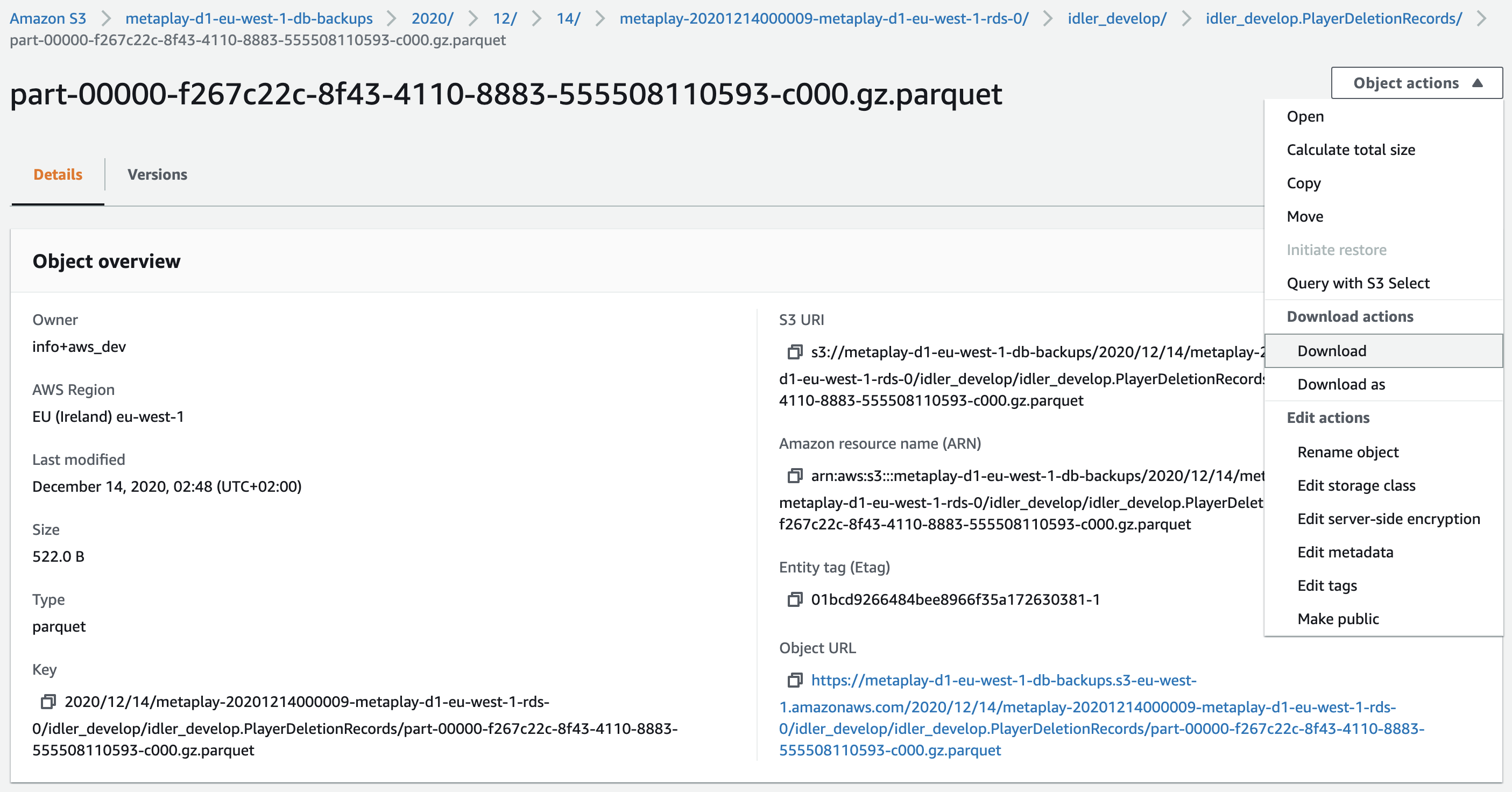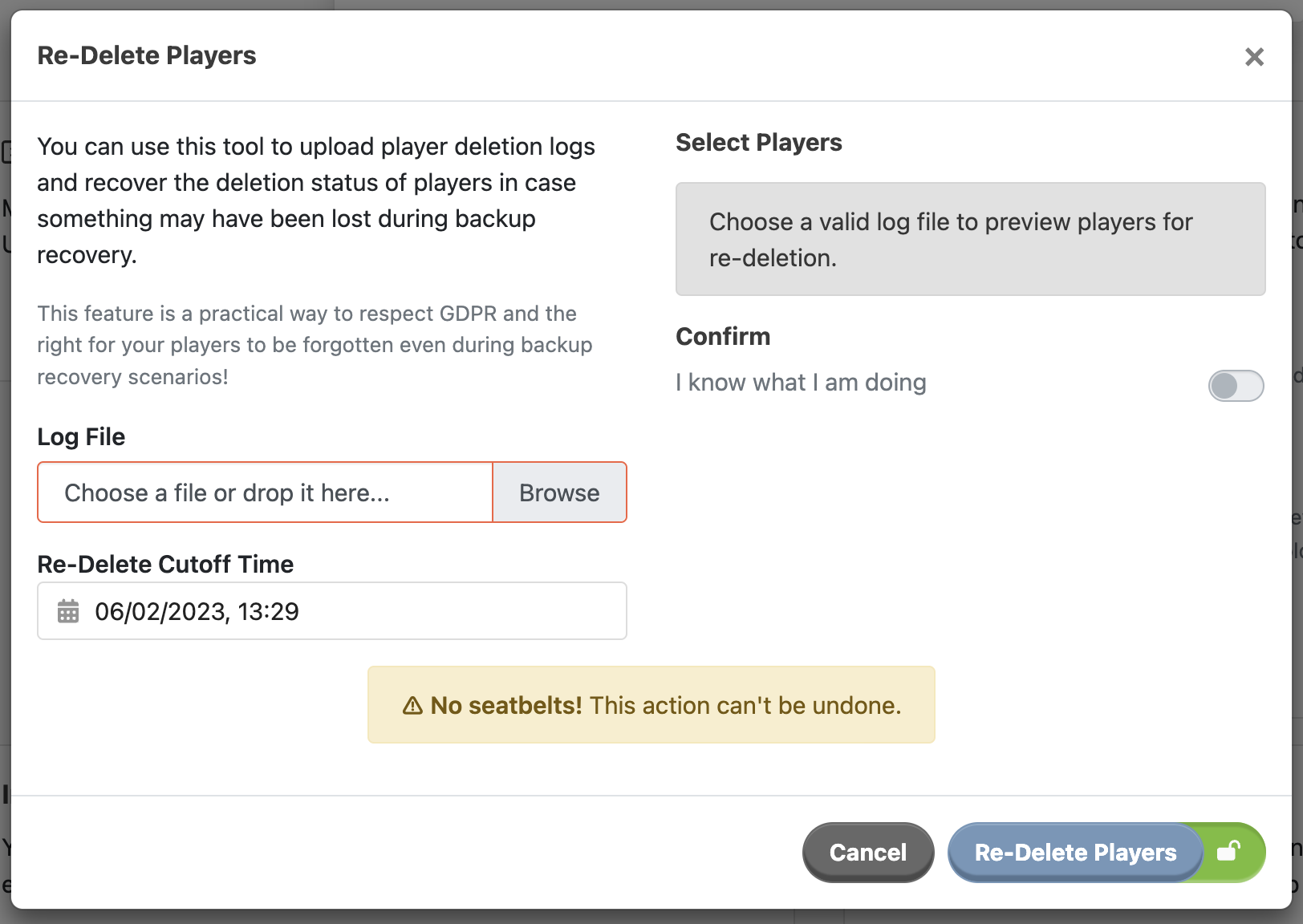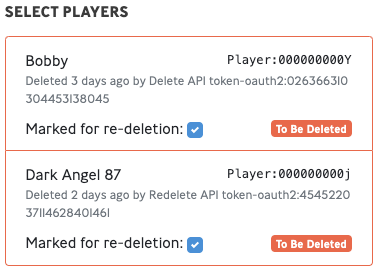Appearance
Re-Deleting Players After Restoring From Backups
To comply with the GDPR "right to be forgotten", we need to ensure that a deleted player stays deleted if you restore the game database from a backup. This page explains how to do that.
Appearance
To comply with the GDPR "right to be forgotten", we need to ensure that a deleted player stays deleted if you restore the game database from a backup. This page explains how to do that.
Target Audience
This page is primarily intended for users on Private Cloud plans. If you are using Metaplay Cloud with a Pre-launch/Production plan, information from this page may not be directly relevant to your needs.
Because this process is likely to be performed under stressful conditions, it has been designed as an easy-to-follow, step-by-step guide. The aim is to minimize the chance for error as well as to give you confidence along the way that you are doing the right thing.
INFO
If you ever need to restore from a backup, then call us - we'll help.
The process is described in the following steps:
Database operations are covered in Database Infrastructure Operations.
Your database snapshots will be found in AWS S3. Snapshots are taken daily by default, and they will be stored in a hierarchical folder structure from year/month/day. You will first need to locate the backup files for your game's deployment in S3, and then you should navigate to the most recent snapshot.


Your game will most likely be using a sharded database setup, in which case you will see two or more folders for each set of snapshots - one per shard. The delete log snapshot is always located on the first shard, named rds-0. Inside that folder, you'll see some JSON status files and another folder. This folder contains a folder for each snapshot - this means that there will be one folder for each database table that was backed up.


The database table for the delete log is called PlayerDeletionRecords, so click on that folder to see the snapshot. Inside, along with the snapshot file (which has the .gz.parquet extension), you should see a 0-byte file called _SUCCESS. The existence of this file indicates that the snapshot was taken successfully. If you don't see this file, then you'll want to search backward to find the most recent snapshot that did succeed.
 Download the snapshot file (click on the filename and then choose
Download the snapshot file (click on the filename and then choose Download from the Object actions list on the page that opens) and keep it handy for step 4.

This guide makes the assumption that you're using AWS and storing your database snapshots as Parquet files in S3, as this is the workflow that Metaplay recommends. Talk to us if you're doing something different.
Navigate to the "manage deployment" page in the LiveOps Dashboard and then choose "open re-delete menu".

In the menu that you just opened, you'll need to enter your configuration details on the left. First, locate (or drag and drop) the delete log file that you downloaded in step 2 into the Log File field. Next, enter the time and date of the database snapshot that you are rolling back to into the Re-Delete Cutoff Time field.

As you enter these configuration details, the server will start to process them, and the results will be shown on the right-hand side of the menu.
DANGER
You need to be careful with the Cutoff Time field - remember that you need to set it to the date of the database snapshot that you are restoring from.
Once the server has processed the configuration that you entered (this should happen almost instantly), you will see a list of players. The generated list shows players that were scheduled to be deleted after the database snapshot was taken.

If, instead of a list of players, you see that there are no players who are eligible for re-deletion - double-check that you have the correct cutoff time set. If, after checking that it is correctly set to the time of your database snapshot, you still have no players listed, then it means that no players were scheduled for deletion since your database snapshot was taken. That's great news for you because it means that you have no players who need re-deleting, and you can skip the rest of this process.

The player list shows all players that the server has determined to need re-deleting by this process. It is almost certain that you will want to leave this list as is - with all players selected.
So why do we make it possible to de-select players? Imagine the nightmare scenario - one of your CS agents goes rogue and deletes players. You catch it quickly, but the damage is so bad that your only recourse is to roll back to an earlier database snapshot to restore those players, but you'll also need to re-delete any legitimately deleted players - how do you tell which are which? That's why we let you review this list and also why we include the ID of the CS agent who scheduled the player for deletion.
Once you're sure that everything is in order, it's time to activate the feature - toggle the "I know what I am doing" switch and then press the "Re-Delete Players" button.

Once you've set off the process, things start happening on the server: